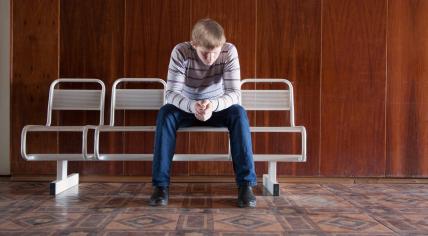
Sexual abuse in youth care almost never reported
Sexual abuse in youth care institutions is almost never reported or investigated, AD reports. The newspaper investigated several recent cases of young people being raped or otherwise sexually abused under the care of youth care. In none of these cases were the police called or the victim taken to a Sexual Violence Center for investigation and to secure evidence.
Lawyer Richard Korver called it a “shocking problem.” He is chairman of the national lawyers' networks for sex crime victims and handles youth care cases. “I also know such cases. Serious crimes, like rape, must be reported. And you can prevent reporting by undermining those criminal offenses by condoning them. Sexual abuse, for example, is dismissed as flirtation that got out of hand. Then, it is about the sexually soliciting behavior of girls instead of the abuse that happened. That this happens says a lot about the culture within youth care. Blaming the victim is a 1950s phenomenon, but it is persistent.”
Lawyer Chris Sent has handled several examples of abuse in youth care in recent years that proved impossible to determine what actually happened. “There are many interests that are considered when deciding to file a report or charges,” she told AD. “If the abuse took place outside the institution, is supervision in order? This question can also be asked if it happens within the walls of an institution. But the impediments such interests can create are ignored. Meanwhile, youth care institutions often conduct their own investigations. And before you know it, the evidence is gone, and you will never get that hard story again.”
AD spoke to a 21-year-old woman who got raped and ran away from a youth care institute when she was younger. The police took her back to the institute, told her to shower because she stank, and scolded her for running away from the institution. When her father insisted on calling the police, that didn’t happen. “Daddy didn’t push through. And eventually nothing happened,” she told the newspaper.
A youth care worker with years of experience in the sector knows similar examples. Blaming the victim is a common occurrence, they told AD. “Then, for example, it is said that the young person is lying because ‘that is part of the disease.’ And if you ask a young person about their own part if there are suspicions of sexual abuse, you can be sure they won’t talk about it.”
According to the youth care worker, a cover-up is very tempting whether the accused perpetrator is an institute employee or a resident. “If someone wants to report a fellow resident, they are also young people who fall under your responsibility. I have seen how the ball is put in the parents’ court: they must go to the police. But they don’t have all the information.”
According to lawyer Sent, it is shocking that there isn’t more attention to this. Anyone who knows about a serious crime like rape is required by law to report it to the police, she pointed out. It is also established that young people in youth care institutions are vulnerable to sex crimes.
In 2012, the Samsom Committee concluded that children in youth care were 2.5 times more likely to become victims of sexual abuse than those at home. In 2019, the De Winter Committee warned that sexual violence was a continuing occurrence in youth care institutes. In 2021, the Verwey Jonker Institute reported that youth care pays too little attention to the importance of mutual consent, the prevention of transgressive behavior, or the help Sexual Violence Centers can offer.
No figures are available for how often sexual violence in youth care institutions is reported to the police. But last year, the Health and Youth Care Inspectorate said it received 414 reports of sexually transgressive behavior in youth care since 2018.
